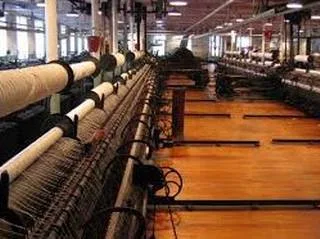Textile terminology and definition
There are some textile terminology and definition which are used in the textile industry as below-
Textile
A
textile is a flexible material made up of a network of natural or synthetic fibers.
Yarn is produced by spinning raw fibers from wool, flax, cotton, flax, or other
materials to produce long strands. Textiles are made by weaving, knitting,
crocheting, knotting, tatting, felting, or braiding.
Fiber
Fiber
is a natural or man-made material that is significantly longer than it is wide.
Fibers are often used to make other materials.
Natural Fiber
The fiber that is produced by nature like plants,
animals, and geological processes is called natural fiber. Examples- Cotton,
Wool, Silk, etc.
Synthetic fiber
The
fiber that is produced from different chemical compositions, structures, and properties
is significantly modified during the manufacturing process and is called synthetic
fiber. Examples- Polyester, Acrylic, etc.
Staple fiber
Staples
refer to fibers of individual lengths and can be any composition. Individual
fibers such as natural silk or synthetics are known as filaments rather than
staple fibers.
Staple length
Staple
length is a property of staple fiber and is a term referring to the average
length of a group of fibers of any composition. The staple length depends on
the source of the fibers. The staple length is an important criterion for
spinning fibers, as shorter fibers are more difficult to spin than longer
fibers, so the staple length varies from short to long-length fibers, with short fibers
resulting in more hairy yarn.
Microfiber
Microfiber
is a synthetic fiber that is finer than one denier or decitex/thread and has
a diameter of fewer than ten micrometers. This is smaller than the diameter of
a strand of silk, which is itself around 1/5 the diameter of a human hair. The
most common types of microfibers are made from polyester and polyamide.
Filament
Staple
fiber's opposite word is filament fiber, a fiber that comes in uninterrupted
lengths for use. Silk taken from a silkworm cocoon is called a filament. If the
filament fiber is cut into different lengths, it becomes the staple fiber.
Yarn
A long continuous length of interlocked fibers that is suitable for use in the
production of textiles, sewing, crocheting, knitting, weaving, embroidery, or
rope making is called yarn.
Slub
A slub is a thick spot in a yarn that is created by varying the tightness of the twist.
It is mainly used in knitting.
Woolen
Woolen
or woollen is a type of yarn that is made from carded wool. It is soft, light,
stretchy, and full of air. It makes a good insulator and good knitting yarn.
Wool yarn produces a hard, strong yarn, in contrast to the worsted yarn, where
the fibers lie parallel to the carded.
Worsted
Worsted
is a high-quality wool yarn, the fabric made from this yarn is heavyweight.
Worsted yarns/fabrics are distinct from woolens, the former is considered
stronger, finer, smoother, and harder than the latter. Worsted was made from
the long-staple pasture wool from sheep breeds such as Teeswaters, Old
Leicester Longwool, and Romney Marsh. Pasture wool was not carded; instead, it
was washed, gilled and combed, oiled, and finally spun. When woven, worsteds
were scoured but not fulled. Worsted wool fabric is generally used in the
making of tailored garments such as suits, as opposed to woolen wool, which is
used for knitted items such as sweaters.
Weaving
Weaving
is a technique of textile production where two sets of yarns or threads are
interlaced at right angles to create a fabric or cloth. Longitudinal threads
are called the warp and lateral threads are the weft. The basic weaves are plain weave,
satin weave, or twill weave.
Knitting
Knitting
is a fabric manufacturing technique by which yarn is manipulated to create a
textile that is used in many types of garments. It may be done by hand or by
machine. There are generally many active stitches on the knitting needle at one
time. The knitted fabric consists of several consecutive rows of connected
loops that join the next and previous rows.
Carbonizing
Carbonizing
is a chemical process for eliminating cellulosic matter from a mixture of
animal or synthetic matter. The process involves acid treatment and in this
process hydrochloric acid or sulfuric acid is used.
Moisture regain
The
percentage of water present in the textile material of oven-dry weight is
called moisture regain.
Say,
Oven
dry weight = D
Water
weight = W (Original weight- oven dry weight)
Moisture
Regain = MR
Moisture
Regain (MR) = Water weight (W) / Oven dry weight (D)
Then, MR (%)
= 100 W/ D.
Moisture content
The
weight of water in the material expressed as a percentage of the total weight
is called moisture content.
Say,
Oven
dry weight = D
Water
weight = W (Original weight- oven dry weight)
Moisture
Content = MC
Moisture
Content (MC) = Water weight (W) / (Water weight + Oven dry weight)
Then,
MC (%) = 100 W / (W + D).









0 Comments